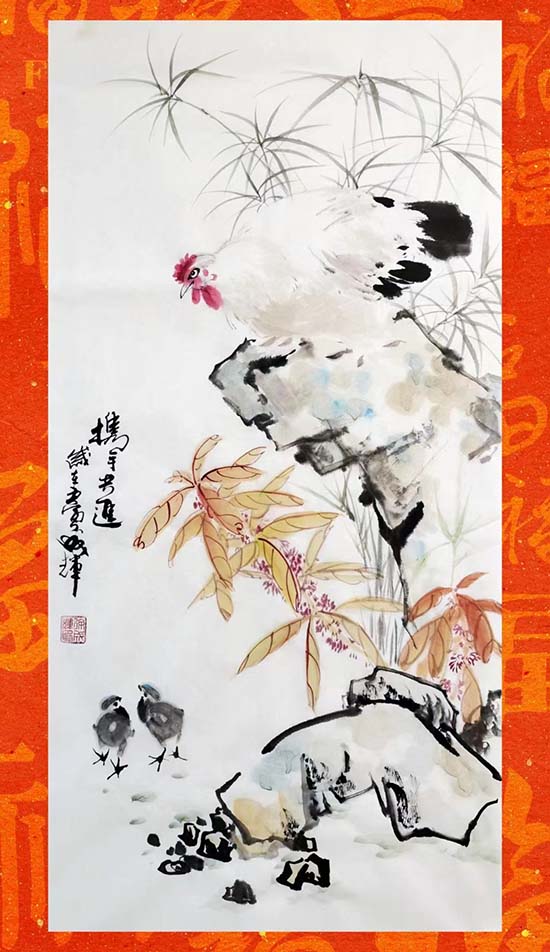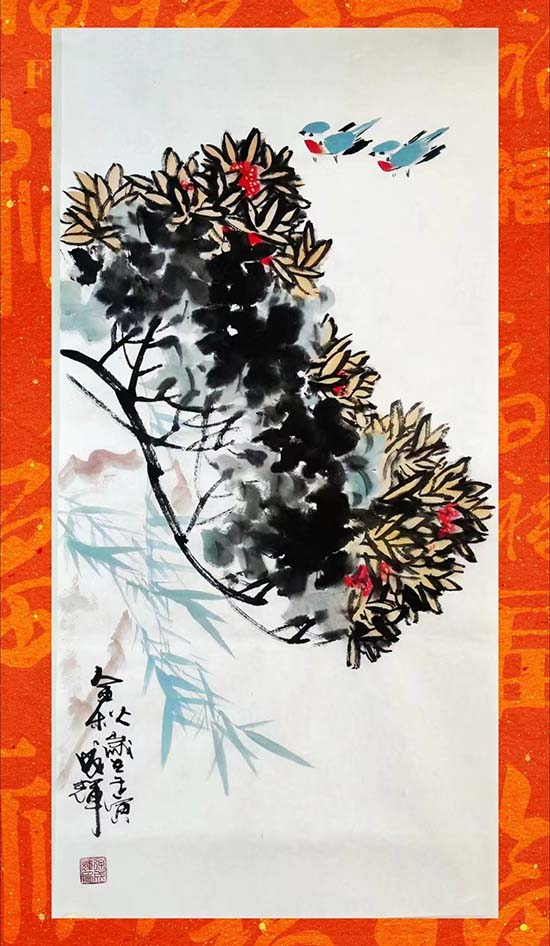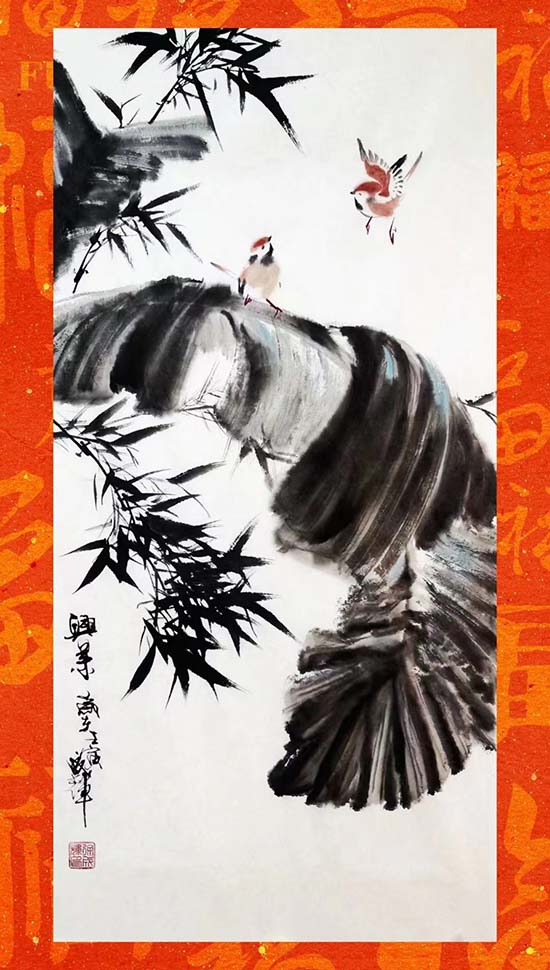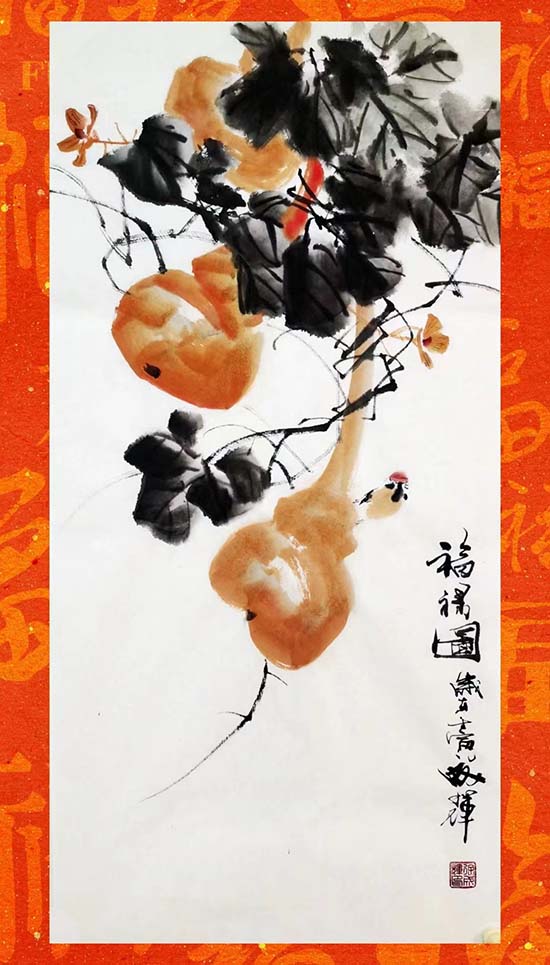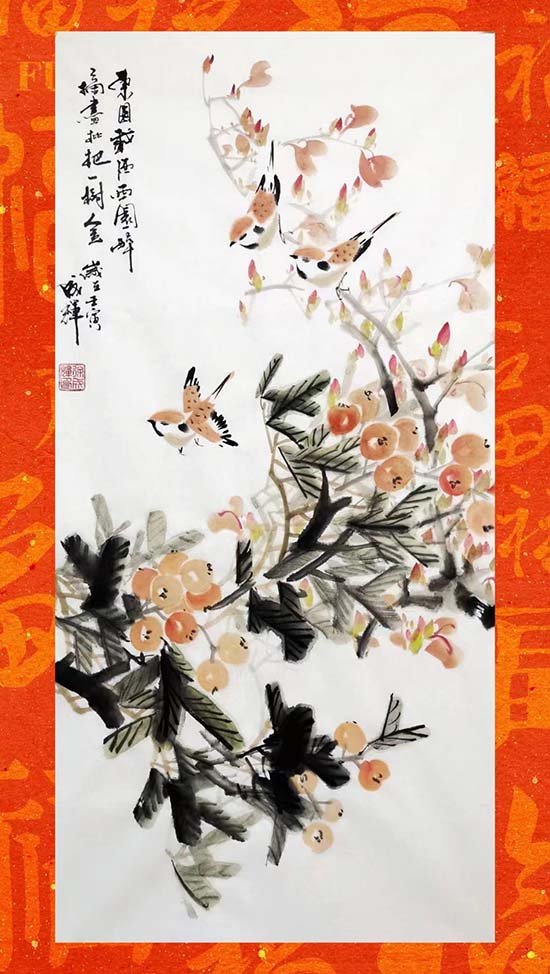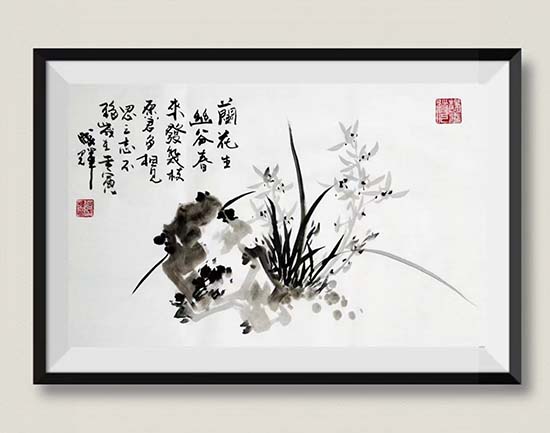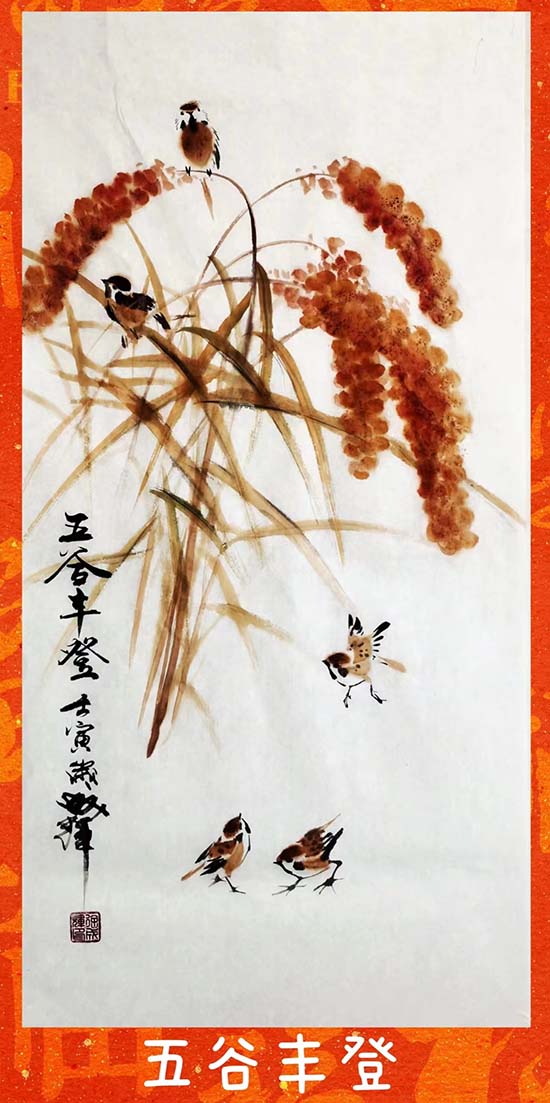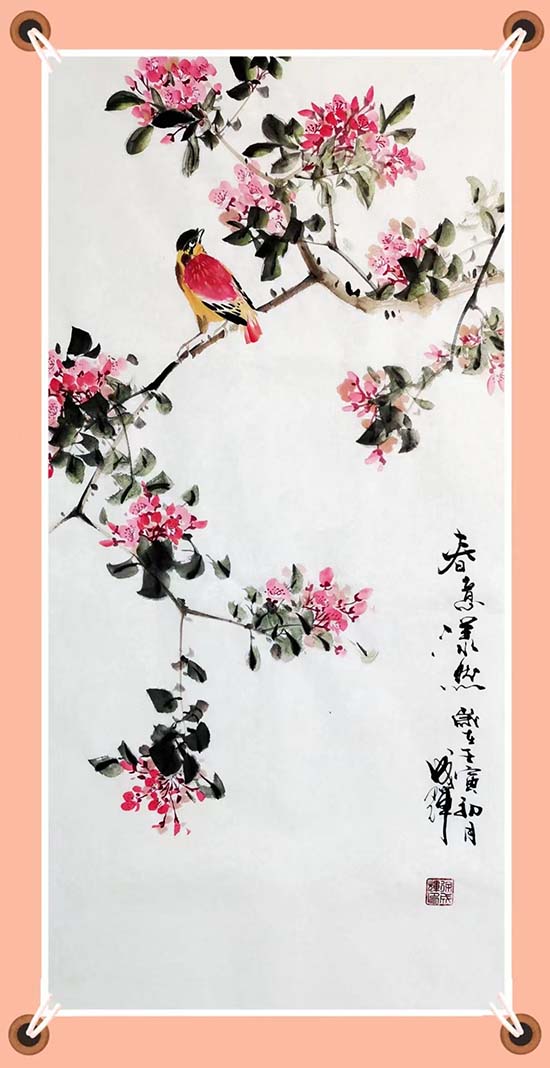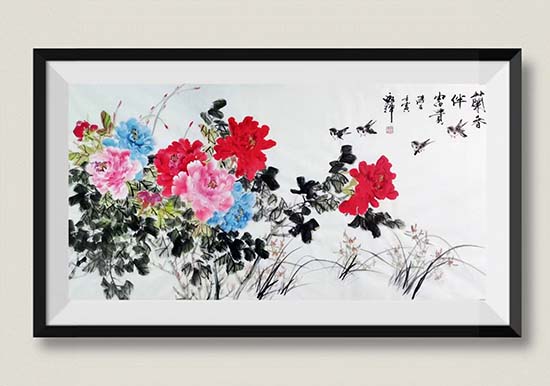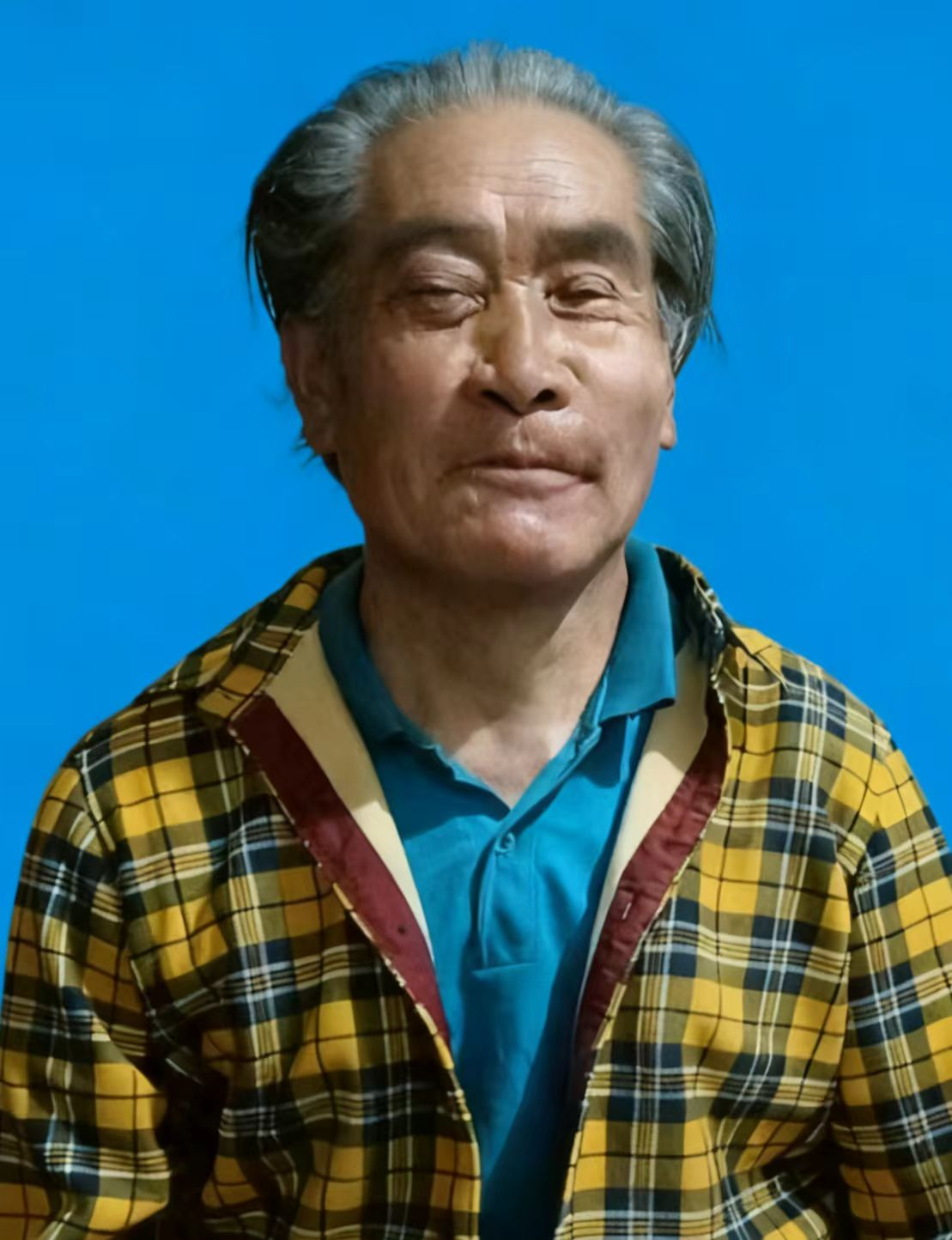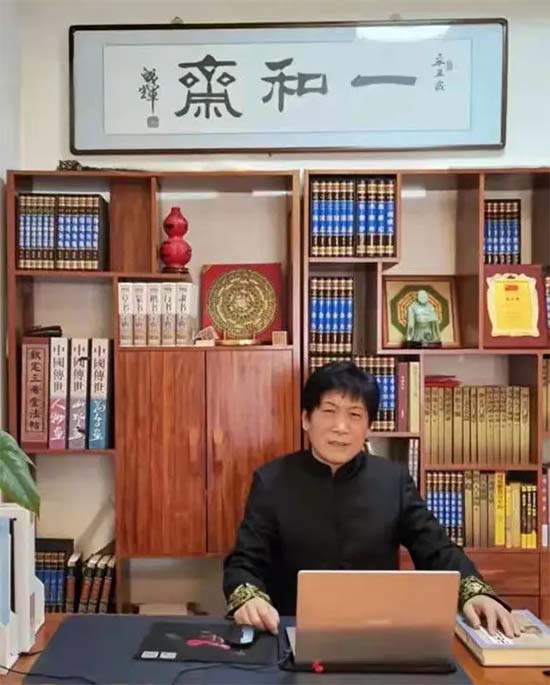
Xu Chenghui, with the courtesy name Jinshi, the Buddhist name Banmei Jushi, and the Taoist name Jingshan, was born in 1965 in Gaobeidian City, Hebei Province. National ritual artist.
From a young age, he had a great love for painting and learning Chinese painting and New Year painting with his father. During his youth, he studied under Liu Shuheng in Zhuozhou City, studying sketching, watercolor, fine brushwork, and freehand brushwork. In order to improve his art, he worked hard and was admitted to Xi'an Academy of Fine Arts. After graduating in 1989, he was full of pursuit and longing for traditional Chinese painting art. He went to famous mountains and ancient temples to sketch from life, and visited famous teachers for advice. He was taught by Huang Yongyu, Tian Shiguang, and Yu Fuqian, Famous figures such as Jin Hongjun. Under the influence of the education of my teachers, my artistic journey has been guided and I have gained a new understanding of art. In the process of in-depth research and exploration of painting, I was deeply attracted by the traditional culture of Zhongyuan. Firstly, I learned Buddhist theories, which helped me understand the principles of good faith, good mindfulness, tranquility and wisdom in Zen, adherence to the Dharma, and adherence to the Dharma and virtue. I studied calligraphy with Abbot Zongyu and was given the Dharma name Banmei Jushi. Later on, I studied Taoist theory and practiced benevolence, respect for righteousness, propriety, wisdom, and trustworthiness. I followed the law of conservation that nature promotes all things, and how to understand the natural way and follow the principles of nature. The Taoist priest Xuanqing bestowed the title of "Jingshan" on me. Since childhood, I have loved ancient literature. After years of further education, I have continuously absorbed nutrients from traditional culture. It was at this moment that I realized clearly that Chinese painting is not just about painting, But rather, it is to find the laws and humanistic philosophy of nature, depict the essence of nature and humanity, and thus find oneself. The style of the work strives to pursue harmony and nature, whether it is flowers and birds, landscape figures, animals, grass and insects, fish, shrimp, crabs, and shells, etc. It requires oneself to draw more materials from real life, depict simple and sincere life interests, express warmth, warmth, and auspiciousness in the human world, and allow people to slowly appreciate the wisdom of nature in the painting, Enjoy nature telling us beautiful and beautiful stories.
